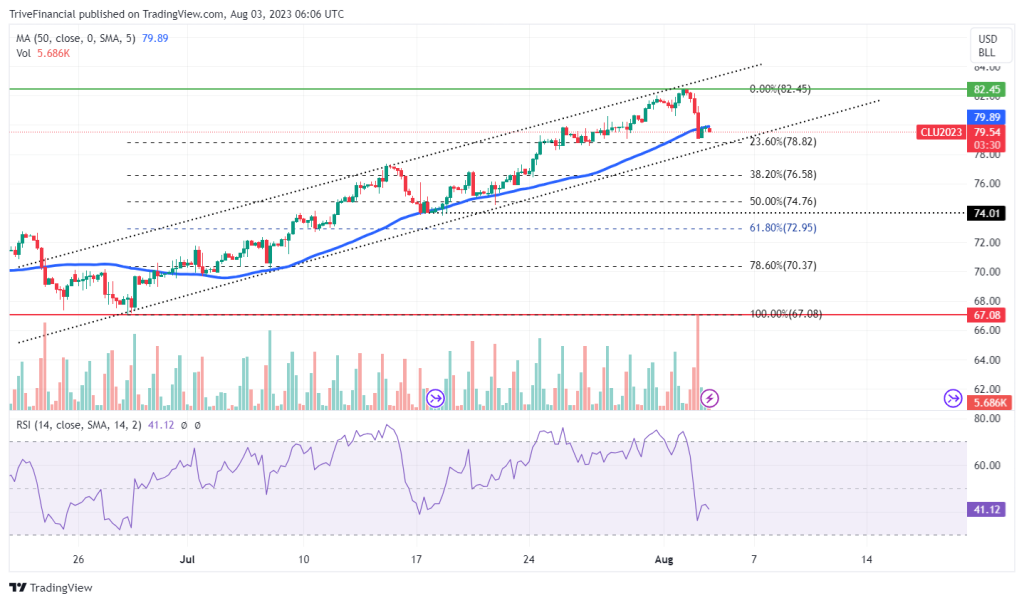The WTI Futures (NYMEX: CL) experienced a decline as Fitch downgraded the United States’ credit rating, leading to risk-off sentiment. The country’s credit downgrade from AAA to AA+ raised concerns about the sustainability of its substantial debt, which may force the US to devise a plan or risk further downgrades.
Despite the initial setback, the WTI Futures rebounded after a 4% tumble, thanks to additional supply cuts. The US crude oil inventories witnessed a significant decrease of 17 million barrels last week, the most substantial drawdown since 1980. Furthermore, Saudi Arabia, a member of OPEC+, announced an output cut of 1 million barrels per day (bpd), potentially boosting demand alongside the reduction in US inventories. Will oil prices defy expectations and increase, or are they on a path towards further decline?
Technical
The WTI Futures have formed an ascending channel pattern on the 4H Chart, which has established a strong upward trend. Since finding major resistance of $82.45 per barrel (BLL) at the upper boundary of the channel, the price action ticked lower and intersected below the 50-day moving average, but a slight leg up aligned the price action with the 50-day moving average.
If the leg up sustains an upward trend, the major resistance of $82.45/BLL may pave the way towards the channel’s upper boundary, marking an upward trend. However, a weakening demand could encourage a pullback towards the $78.82/BLL support at the 23.60% Fibonacci level as the price action fell short of this support level. If a breakdown of the $78.82/BLL support occurs, the price action may succumb to lower levels of support at $76.58/BLL or $74.01/BLL, respectively.

Summary
The WTI Futures rebounded after tumbling by 4%, which could encourage a leg up towards the $82.45/BLL major resistance. However, demand constraints could encourage a pullback towards the $78.82/BLL support, which may pave the way for a reversal if the price action intersects below the lower boundary of the channel.
Sources: TradingView, Reuters, Trading Economics
DISCLAIMER: This report has been prepared by Fairmarkets International (“The Company”). This document is not intended as an offer, solicitation or recommendation to buy or sell financial instruments or to make any investment. The Company has used reasonable efforts to obtain information from reliable sources and the report is provided without representation or warranty of any kind (neither expressed nor implied). The Company and Fairmarkets International disclaims liability for any publication not being complete, accurate, suitable and relevant for the recipient. Specifically, the Company and Fairmarkets International disclaims liability towards any user and other recipients of this report.


